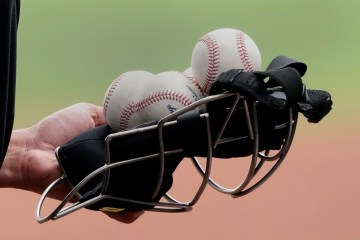Sport-car performance, design distinguished All-American Racer edition ‘Cuda
The AAR badge painted on the 'Cuda's rear flank spelled excitement for fans and generated a healthy dose of respect from those who competed against it on the race track.
From the earliest days of what would be called the pony car phenomenon, the Plymouth Barracuda tried marching in lock-step with the iconic Ford Mustang. Of course it failed to match the Ford in sales, even though, technically, Plymouth's Valiant-based "fish" was the first such vehicle to appear in public in the spring of 1964. But with each passing year, the Mustang marketing juggernaut grew stronger, even though the slower-selling Barracuda steadily improved in both style and in unbridled muscle.
In the fall of 1969, Chrysler introduced its third-generation Barracuda, along with a similar looking Dodge Challenger. The Plymouth version came in two strengths: regular Barracudas with basic six-cylinder and small-displacement V-8 engines; and performance-oriented 'Cuda models that featured "big-block" 383, 440 and 426 Hemi powerplants with as much as 425 horsepower itching to bust lose.
That year, the decision was made by Chrysler to supplement the corporation's existing competition program, which was primarily centered on drag and stock car racing, by sponsoring Barracuda and Challenger teams in the 1970 Sports Car Club of America Trans-American sedan road-racing series. Established four years earlier, Trans-Am racing was attracting big-name drivers, along with car companies spending whatever was needed to field competitive machinery and showcase their respective cars.
The head honchos at Plymouth were keen to compete, but required an organization with enough expertise to manage their racing program. They brought in Dan Gurney, one of the most successful drivers to ever strap on a helmet. Since his retirement as an active driver, Gurney was busy building race cars under his All-American Racers banner.
While Gurney set about acquiring the necessary talent and constructing specially modified Barracudas, Plymouth began assembling sufficient quantities of street-legal versions to satisfy the Trans-Am regulations, which specified that 2,500 examples be offered to the public.
Cashing in on Gurney's obvious notoriety, the model was labeled the AAR 'Cuda. The street cars came with Chrysler's 340 V-8 fitted with three two-barrel carburetors. Other unique equipment bolted to the AAR included exhaust pipes that exited below each door, beefed-up suspension, larger front disc brakes, "pistol-grip" four-speed shifter, a matte-black fiberglass hood with a functional scoop, rear-deck-mounted spoiler and a quicker steering gear.
One item of note was a special set of rear springs on the AAR that added 1.75 inches of ground clearance (to help the exhaust pipes) and allowed for tires that were one size wider in back than on the front wheels. Although common on many sports cars today, altering a production car in this way was virtually unheard of back in 1970.
To visually distinguish an AAR 'Cuda from the rest of the school, an attractive broken-line "strobe" stripe ran along the sides, concluding with Gurney's AAR logo displayed on the rear fenders.
The AAR's output was pegged at 290 horsepower, a rating equal to the Boss 302 Mustang street/competition car, but less than Chevrolet's highly successful 1970 Z28 Camaro, which used a Corvette-based 350 cubic-inch V-8 worth 360 horses.
The AAR 'Cudas that Gurney hand-built for his driver, the improbably named Swede Savage, cost considerably more than the $3,966 Plymouth charged for each one of its street versions. That price, however, represented a hefty $1,200 premium over and above a base Barracuda.
Still, Plymouth had no problems selling every one of the 2,724 AAR 'Cudas it was required to build that year. Unfortunately, the Gurney/Savage AAR race car wasn't nearly as successful, finishing fifth in the points (behind a similarly equipped Dodge Challenger and well off the pace set by both the Mustang and AMC's second-place Javelin entry) in what is acknowledged as the most competitive and dramatic Trans-Am series ever staged.
Today, surviving AARs are literally worth their weight in gold, especially those lovingly restored to their former fame, if not their racing glory.
Malcolm Gunn is a feature writer with Wheelbase Communications. He can be reached on the Web at www.wheelbase.ws/mailbag.html. Wheelbase Communications supplies automotive news and features to newspapers across North America.











